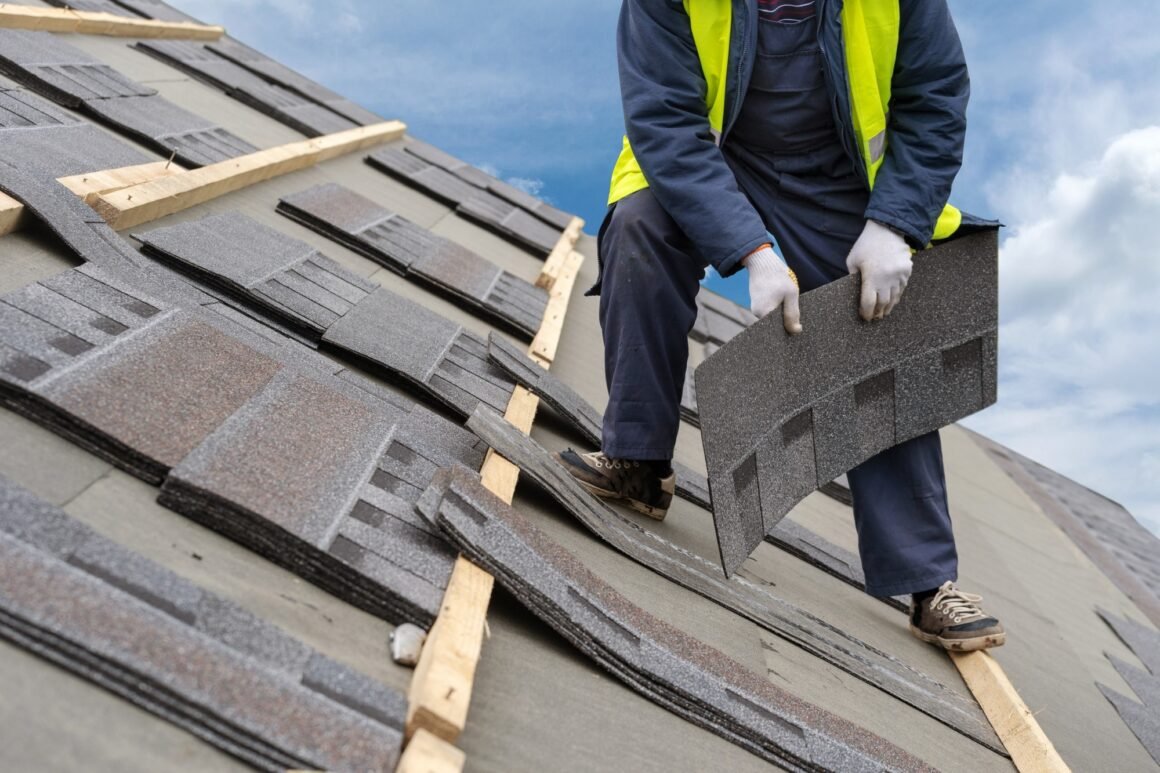Table of Contents Show
Asphalt roof shingles may be the most common type of roofing material, but in 2019, concrete and clay tiles dominated the roofing material market with a staggering $33.9 billion. While these may dominate, there are many more types of roofing materials in the industry.

The question is, how do you choose the best roof material for your home? When it comes to choosing a new roof, you need to consider a lot more than just the aesthetic appeal.
In this guide, we have broken down all those considerations.
Read Also:
What Is Your Current Lifestyle?
Are you living in a permanent or temporary home? If it’s permanent, then durability should be one of the top priorities. How much effort, time, and money do you want to put into your current house?
The answer to this question will help you determine what kind of roofing materials to choose, and what kind of budget to set.
With a budget in mind, you can narrow down the best roof material that meets all your needs.
Consider the Style of Your Home
The style of your home also plays a significant role in the type of roofing material you get. For instance, if you have a ranch house, a metal roofing material would not be ideal, just like wood shingles would not look good on a Spanish home.
It’s vital that you choose a roofing material that’s consistent with your home’s architecture design.
You may not like a certain roof material, but if it’s suitable for your home, you can have it imitated with the material you desire.
For instance, if you love the look that wood gives to a home, you can get fiber cement shingles because they can be made to imitate the original appearance of wood, or even slate.
Concrete and metal can also imitate wood and tile as well. This concept gives you a variety of options to choose from, so if you want the durability that metal comes with, but the aesthetic appeal of wood, you can have the best of both worlds.
Durability and Longevity
Most of the time, you’ll find that price is a significant determinant in the longevity of roofing material. Most inexpensive materials tend to be short-term solutions because they are not sturdy enough to take the impact of weather elements and wear and tear for a long time.
It’s essential for you to consider both the longevity and price of the roofing material before making a choice.
The last thing you want is to have to replace your roof in the next couple of years or to have to constantly deal with leaks.
Leaks can be quite expensive to fix, not to mention the water damage they come with, which is not only structural as you may be to deal with mold as well. It’s wise to pay more now for a quality roof and save yourself the trouble later.
Consider the Weight of the Materials
This is the one thing most homeowners forget to consider when choosing the best roof material. You see, a roof can be quite heavy, and you need to consider whether the building structure can hold all of it.
If it can’t, you’ll have to support it with framing, and this will affect the overall construction price, and the roof installation as well. You’ll spend more time and more money.
The Climate in Your Area
The weather in your area will have a huge impact on how long your roof lasts, so you need to consider the amount of impact your new roof will be taking.
Do you like in a hot climate where your roof will face heat all day? Do you live in areas prone to hurricanes and storms?
Or do you live in constantly snowing or rainy climates? Whatever weather you experience in your area, you need to ensure that your roof will be able to take it and protect the rest of your home.
Consider the Installation Process
Most people forget to factor in the installation process when choosing the best roof material. You see, some roofing materials are easier to install than others.
You may find that roofing tiles take longer to install, and the costs are likely to be higher as well.
Consider Flammability and Other Hazards
It’s crucial for you to think about safety, and the best roofing material will have low flammability.
For instance, metal, slate, clay, concrete, and ceramic roof materials offer good protection against fire. Additionally, it’s best to purchase a roofing material that is resistant to other hazards.
State Codes and Municipality Requirements
Every state has building codes that must be adhered to, and you need to check the slides in your state before choosing a roofing material.
For instance, if you like in areas prone to storms, hurricanes, or forest fires, you may find that certain roofing materials are prohibited.
As much you desire those materials, avoid making a purchase only to find out that you can’t use the materials.
Check with your municipality as well, and if you like in a homeowner’s community, you may also need to consult with them about roofing materials restrictions.
Consider Functionality and Aesthetics
The pitch of your roof can dictate the type of roofing material you should get. For instance, if you have a steep roof, you should get a roofing material that sheds water faster, like cedar shingles or shakes.
If your roof has many corners, you should get a material that’s easy to cut to different shapes and sizes, like slate, because it’ll match your architectural design.
Beyond that, consider the overall look of the roof, because roofing materials come in a wide variety of styles, shapes, colors, and textures.
Consider Energy Efficiency
Last but not least, you need to consider energy efficiency while deciding what would be the best roof material for your home.
An energy-efficient roof is a way to go because, in the long run, it’ll save you a lot on energy bills, and it’s a green alternative.
Choosing the Best Roof Material: Best Tips
If you are in the market for a new roof, these are the considerations you need to make, and you’ll have an easier time choosing the best roof material.
There are so many to choose from, do compare all options, check out their pros and cons, and make sure you’re making the right decision.
If you need to know more about building your home or architecture, our website has all that and more!










